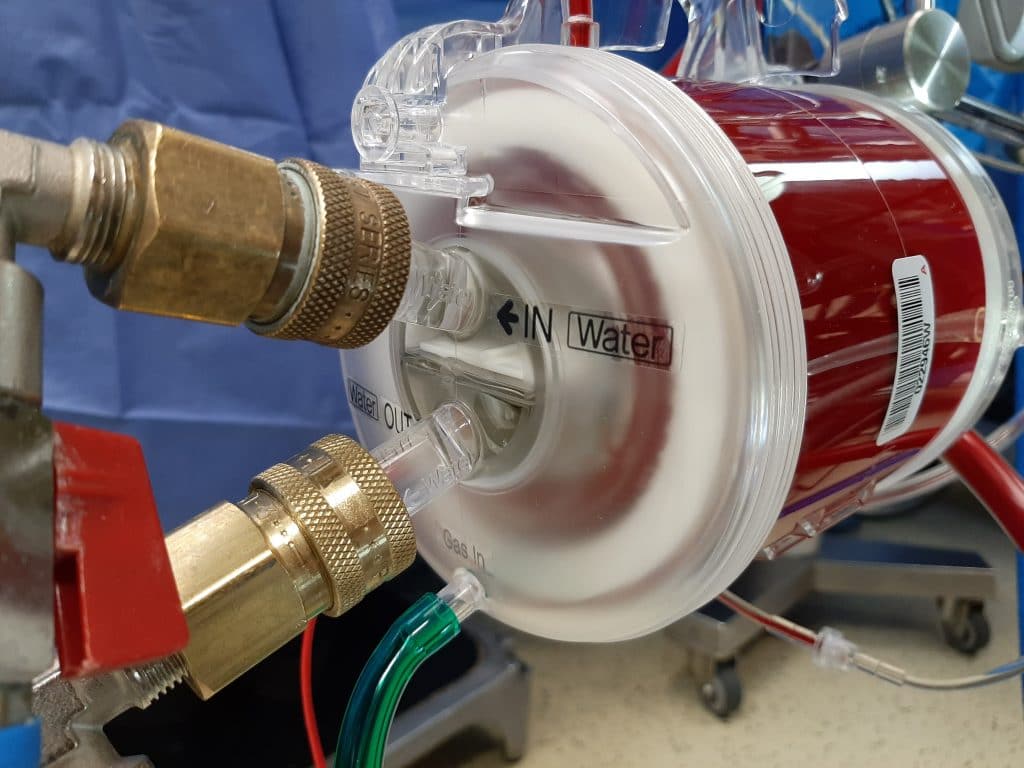Fraction of Expired Oxygen: An Additional Safety Approach to Monitor Oxygen Delivery to The Heart Lung Machine Oxygenator

Background
Monitoring oxygen delivery to the oxygenator of a heart lung machine (HLM) is typically accomplished with an O2 analyzer connected to the gas inflow line. It is assumed when the FiO2 is greater than 21% that oxygen is being delivered to the oxygenator. However, this assumption is imperfect because the connection of the inflow line to the oxygenator is downstream from the O2 analyzer. FiO2 monitoring will not alert the perfusionist if the inflow line is not actually connected to the oxygenator. Measuring the fraction of expired oxygen (FEO2) is a more reliable way of monitoring O2 delivery.
Methods
An O2 analyzer was placed on the scavenging line that is attached to the exhaust port of oxygenator (FEO2).
Results
Whenever the FiO2 is greater than 21%, and the inflow line is properly connected, the FEO2 exiting the oxygenator is greater than 21%. The FEO2 falls to 21% when the inflow line is not functioning.
Conclusion
Monitoring the FEO2 is a more reliable way to verify O2 delivery to an oxygenator. An alarm can be set on the FEO2 monitor to alert the perfusionist if the FEO2 falls below a predetermined threshold so any issue with O2 delivery will always be recognized.
